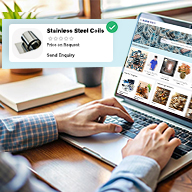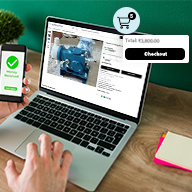Product optimisation: Key aspects and steps

Business Development
292 week ago — 6 min read
For small and medium businesses the term product optimisation is like a hot cake. It can not only add immense value to your business but can also make your products more relevant and desirable in the market.
But what is product optimisation? In simple terms, product optimisation is the process of making changes to a product to lend it a richer and more desirable appeal. There are so many aspects to a single product. For example, a pack of biscuits can have different attributes like the shape of the packet, nutritional value, flavour etc. And you can upgrade or make minor changes to any aspect of the product according to customer demand at that particular time. The main aim of product optimisation is to enhance the marketing metrics like increased purchase and interest in the product and so on.
Product optimisation is the process of making changes to a product to lend it a richer and more desirable appeal. The main aim of product optimisation is to enhance the marketing metrics like increased purchase and interest in the product.
Product optimisation starts with teams analysing the market environment of the current product. The next step is to define the Key Performance Indicators (KPI) of the product and the budget and time scale under which the optimisation process will be completed. Once all that is set, the process of product optimisation begins.
Here are some aspects of product optimisation that you should bear in mind:
Cost
This could mean either reducing the cost of the product or categorising it under higher range. This helps drive higher market value.
Selection of material
- Carbon footprint: is the current product sustainable in nature? If not them steps are taken to ensure that the product is optimised for eco-friendliness and other sustainable parameters.
- Greater efficiency: either through simplification of the process or by reducing the time scale
- Digitisation: If the product is old and the first model was designed using pen and paper, then the images need to be digitised. This can be easily done using Computerised Aided Design (CAD) to reproduce a digital copy of the same. Once the image is digitally produced, further process of enhancing or modifying it can begin.
- Comparing with other products: having a thorough knowledge of what your competitors are doing and reading the current market trends can save you a lot of money that would have otherwise gone into making a product not competent enough for the market.
- Evaluating the product: before the product is moved to the pre-production phase, it is run through various simulators that can detect errors if any thereby reducing the cost and risking downstream.
- Product testing: once the product is evaluated, it goes through the testing process. The product is run in a testing environment. Sometimes a physical testing of the product is also done. Rapid prototyping (RP) and Rapid Manufacturing (RM) is done in such cases to create a physical model of the product.
- Adding further value: Whether the product needs to be protected under intellectual property rights (IPR) and what are the opportunities the product provides is discussed in this stage before the product is finally released officially in the market.
Also read: 3 easy ways to fix the leaking sales funnel
Let us look at the steps for product optimisation:
Steps for product optimisation
1. Define the important parameters
As mentioned earlier, the first and foremost step to optimising a product starts with finalising the time frame, budget and the KPI. Do an extensive research on which idea is best for the product you are trying to optimise. If the idea will impact a larger audience you are trying to appeal. All of these parameters are very important to consider before modifying or completely changing a product.
2. Make one change at a time
It is always wise to implement one change at a time. Even though there are ways to test multiple changes at the same time, for small and medium companies on a strict budget, it is better to invest in one step at a time.
3. Try testing the product for a smaller bunch of traffic
Again as small or medium sized business, it is better to test out your optimised products with a small number of traffic . You don’t want to risk your money in case the product isn’t a success.
4. Don’t let stumbling blocks along the way demotivate you
It is normal to have minor hitches along the process. Performance of operations plays a big role in determining the product testing is error-free. Testing a product takes a lot of time and make sure you pay attention to automated robots that sometimes crop up during product testing. In that case you can run A/A tests to eliminate these pitfalls.
5. When in doubt, take it off
Even if you have the slightest doubt regarding the product, take it off. Your company can get into trouble if something doesn’t work out and you have already spent so much in optimising it. Even if it makes keeping your store leaner, so be it.
Last but not the least, User Interface and marketing strategies play an important role in ensuring that your optimised product is launched well and accepted by the audience well. The right marketing strategy can give your product the much needed spotlight making your experiment a successful one.
Also read: 6 benefits of working with a Google partner
Image courtesy: shutterstock.com
Posted by
GlobalLinker StaffWe are a team of experienced industry professionals committed to sharing our knowledge and skills with small & medium enterprises.
Network with SMEs mentioned in this article
View GlobalLinker 's profile
Most read this week














Comments (1)
Share this content
Please login or Register to join the discussion